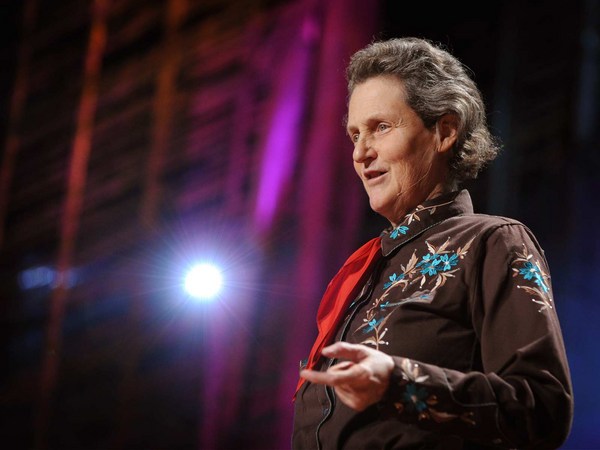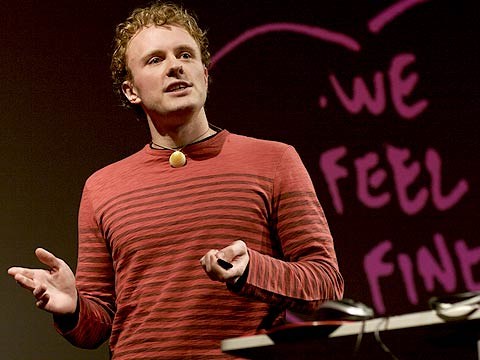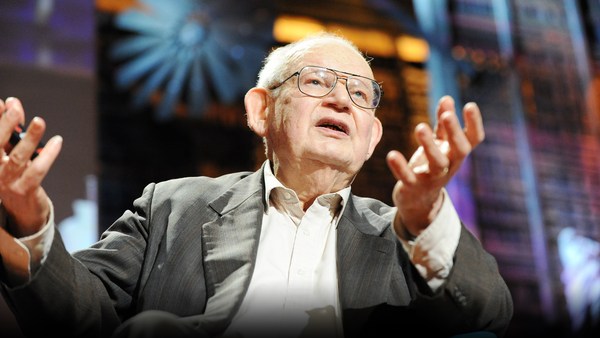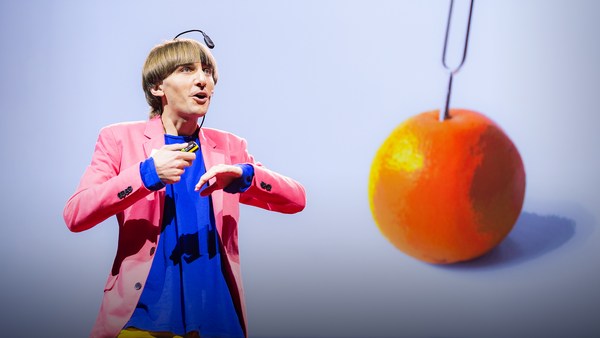I'm a savant, or more precisely, a high-functioning autistic savant. It's a rare condition. And rarer still when accompanied, as in my case, by self-awareness and a mastery of language. Very often when I meet someone and they learn this about me, there's a certain kind of awkwardness. I can see it in their eyes. They want to ask me something. And in the end, quite often, the urge is stronger than they are and they blurt it out: "If I give you my date of birth, can you tell me what day of the week I was born on?" (Laughter) Or they mention cube roots or ask me to recite a long number or long text. I hope you'll forgive me if I don't perform a kind of one-man savant show for you today. I'm going to talk instead about something far more interesting than dates of birth or cube roots -- a little deeper and a lot closer, to my mind, than work.
I want to talk to you briefly about perception. When he was writing the plays and the short stories that would make his name, Anton Chekhov kept a notebook in which he noted down his observations of the world around him -- little details that other people seem to miss. Every time I read Chekhov and his unique vision of human life, I'm reminded of why I too became a writer. In my books, I explore the nature of perception and how different kinds of perceiving create different kinds of knowing and understanding.
Here are three questions drawn from my work. Rather than try to figure them out, I'm going to ask you to consider for a moment the intuitions and the gut instincts that are going through your head and your heart as you look at them. For example, the calculation: can you feel where on the number line the solution is likely to fall? Or look at the foreign word and the sounds: can you get a sense of the range of meanings that it's pointing you towards? And in terms of the line of poetry, why does the poet use the word hare rather than rabbit? I'm asking you to do this because I believe our personal perceptions, you see, are at the heart of how we acquire knowledge. Aesthetic judgments, rather than abstract reasoning, guide and shape the process by which we all come to know what we know. I'm an extreme example of this.
My worlds of words and numbers blur with color, emotion and personality. As Juan said, it's the condition that scientists call synesthesia, an unusual cross-talk between the senses. Here are the numbers one to 12 as I see them -- every number with its own shape and character. One is a flash of white light. Six is a tiny and very sad black hole. The sketches are in black and white here, but in my mind they have colors. Three is green. Four is blue. Five is yellow.
I paint as well. And here is one of my paintings. It's a multiplication of two prime numbers. Three-dimensional shapes and the space they create in the middle creates a new shape, the answer to the sum. What about bigger numbers? Well you can't get much bigger than Pi, the mathematical constant. It's an infinite number -- literally goes on forever. In this painting that I made of the first 20 decimals of Pi, I take the colors and the emotions and the textures and I pull them all together into a kind of rolling numerical landscape.
But it's not only numbers that I see in colors. Words too, for me, have colors and emotions and textures. And this is an opening phrase from the novel "Lolita." And Nabokov was himself synesthetic. And you can see here how my perception of the sound L helps the alliteration to jump right out. Another example: a little bit more mathematical. And I wonder if some of you will notice the construction of the sentence from "The Great Gatsby." There is a procession of syllables -- wheat, one; prairies, two; lost Swede towns, three -- one, two, three. And this effect is very pleasant on the mind, and it helps the sentence to feel right.
Let's go back to the questions I posed you a moment ago. 64 multiplied by 75. If some of you play chess, you'll know that 64 is a square number, and that's why chessboards, eight by eight, have 64 squares. So that gives us a form that we can picture, that we can perceive. What about 75? Well if 100, if we think of 100 as being like a square, 75 would look like this. So what we need to do now is put those two pictures together in our mind -- something like this. 64 becomes 6,400. And in the right-hand corner, you don't have to calculate anything. Four across, four up and down -- it's 16. So what the sum is actually asking you to do is 16, 16, 16. That's a lot easier than the way that the school taught you to do math, I'm sure. It's 16, 16, 16, 48, 4,800 -- 4,800, the answer to the sum. Easy when you know how.
(Laughter)
The second question was an Icelandic word. I'm assuming there are not many people here who speak Icelandic. So let me narrow the choices down to two. Hnugginn: is it a happy word, or a sad word? What do you say? Okay. Some people say it's happy. Most people, a majority of people, say sad. And it actually means sad. (Laughter) Why do, statistically, a majority of people say that a word is sad, in this case, heavy in other cases? In my theory, language evolves in such a way that sounds match, correspond with, the subjective, with the personal, intuitive experience of the listener.
Let's have a look at the third question. It's a line from a poem by John Keats. Words, like numbers, express fundamental relationships between objects and events and forces that constitute our world. It stands to reason that we, existing in this world, should in the course of our lives absorb intuitively those relationships. And poets, like other artists, play with those intuitive understandings. In the case of hare, it's an ambiguous sound in English. It can also mean the fibers that grow from a head. And if we think of that -- let me put the picture up -- the fibers represent vulnerability. They yield to the slightest movement or motion or emotion. So what you have is an atmosphere of vulnerability and tension. The hare itself, the animal -- not a cat, not a dog, a hare -- why a hare? Because think of the picture -- not the word, the picture. The overlong ears, the overlarge feet, helps us to picture, to feel intuitively, what it means to limp and to tremble.
So in these few minutes, I hope I've been able to share a little bit of my vision of things and to show you that words can have colors and emotions, numbers, shapes and personalities. The world is richer, vaster than it too often seems to be. I hope that I've given you the desire to learn to see the world with new eyes.
Thank you.
(Applause)




